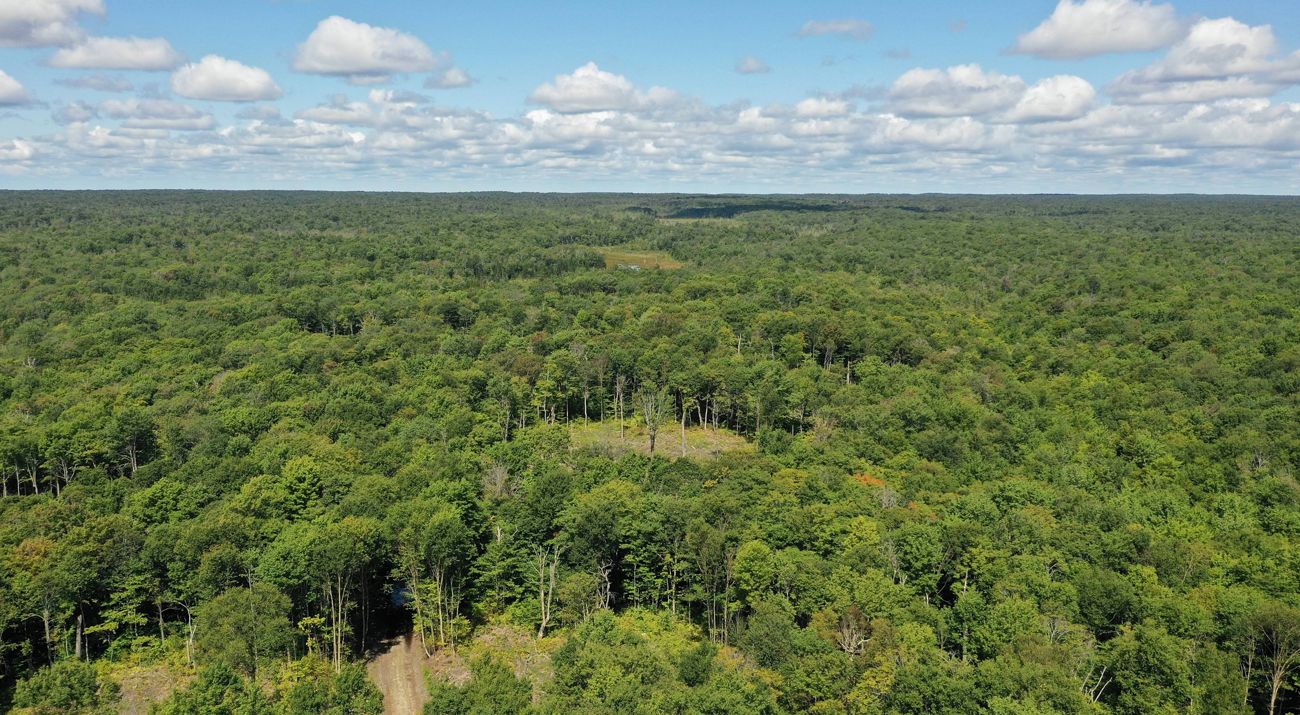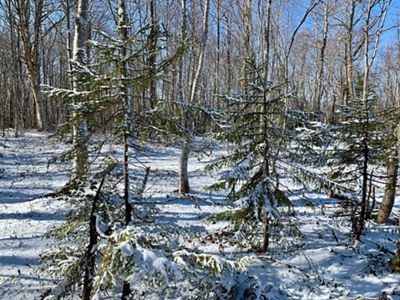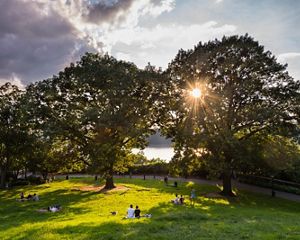
When The Nature Conservancy’s forest restoration team in New York planned a spring tree planting on Tug Hill, they didn’t anticipate doing it in a snowstorm, or during a pandemic. But over two weeks this May, against a backdrop ranging from wind and snow to 90-degee days, they prepared 8,500 trees for planting and placed an equal number of colored flags across the 12-acre restoration site. Each flag color represented a different species—red oak, white oak, sugar maple and white pine—and ensured that the trees could be planted in a socially distant way and monitored by researchers this summer, continuing an experiment aimed at learning how forests on Tug Hill are responding to climate change.
“It was surreal to go from migrating warblers singing from the treetops one day to snow-covered wildflowers the next,” says Chris Zimmerman, Forest Restoration Ecologist with The Nature Conservancy in New York. “But it’s just this kind of unpredictability that Tug Hill could see more of as the climate changes.”


Can We Prepare Tug Hill Forests for Climate Change?
Tug Hill is a 1.2 million-acre mosaic of public and private lands and a critical link between the Adirondacks to the northeast and the Appalachian Mountains to the south. Black bears, fishers, American martens and forest birds like the three-toed woodpecker roam the vast forests here, and the forest filters streams that pour clean water into the Mohawk River and Lake Ontario.
Quote: Jim Howe
Helping the forest get ready for what’s coming is a big job, and there’s no map. But we have the perfect living laboratory for seeking answers.
Figuring out how to prepare this forest for the future is critical for the health of the ecosystem and all that it supports, including clean drinking water for 11 municipalities, a vibrant recreation economy and 7,000 forest-related jobs. It’s also urgent. The Tug Hill region, which is known for record-setting snowfalls, is expected to warm by as much as four to six degrees Fahrenheit by the 2050s.
The Nature Conservancy’s work on Tug Hill, funded in part through a grant from the Wildlife Conservation Society’s Climate Adaptation Fund—a fund established by a grant from the Doris Duke Charitable Foundation—aims to grow a strong and diverse forest able to weather such changes.
Our Forests, Our Future
“Helping the forest get ready for what’s coming is a big job, and there’s no map,” says Jim Howe, The Nature Conservancy’s Central and Western New York chapter director. “But we have the perfect living laboratory for seeking answers.”

The project is taking place deep within the forest core on a 400-acre property that was once clear-cut. The Nature Conservancy purchased the property in 2015 to expand conservation lands in the region and improve the forest’s health.
In the first phase of the project, two years ago, the team replanted the land with 35,000 seedlings of tree species present on Tug Hill today as well as species expected to thrive in a future climate. Just after the site was planted, the tiny seedlings endured a month-long drought and species like red oak that are not currently present in the region fared better than others.
“Many associate climate change with more water, but in a snowy region like Tug Hill, warmer winters and less snowfall can actually mean more seasonal droughts as well,” adds Zimmerman. “We’re figuring out how to prepare our forests for that reality.”


A Laboratory for Forest Management
Now, in partnership with the University of Vermont, the team is looking at whether planting additional trees can increase forest health and resilience. They are also experimenting with forestry techniques, such as creating small gaps in the tree canopy and leaving snags and large woody debris on the forest floor, to create wildlife habitat. The findings will help both The Nature Conservancy and public and private forest owners across New York better manage their forest lands.
“Fifty percent of our forests in New York are owned privately, by families who have limited time and resources to study and understand how climate change will affect their forests,” said Howe. “By working with private forest landowners to learn and incorporate best management practices for their trees, we are helping prepare our forests—and ourselves—for the future. Healthy forests that can adapt and overcome changes in our climate will help protect and provide for all of us.”


